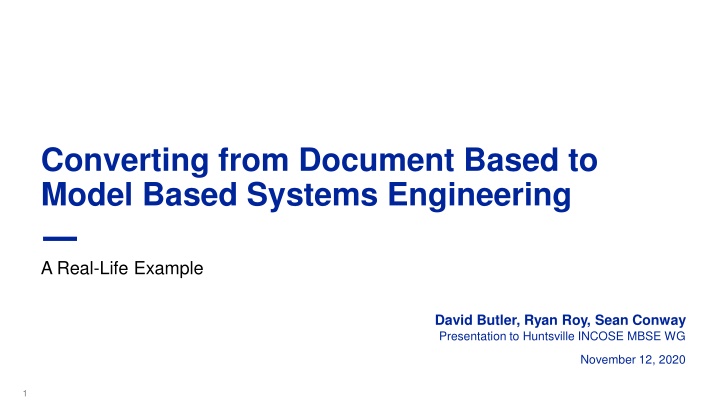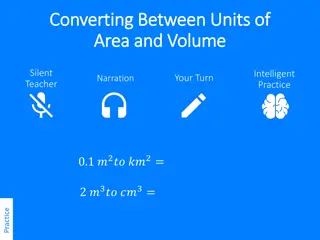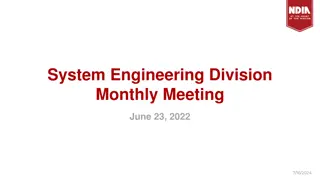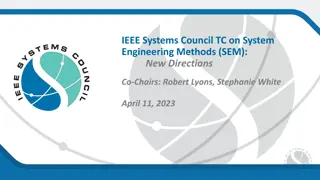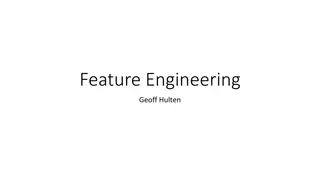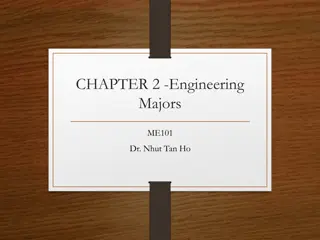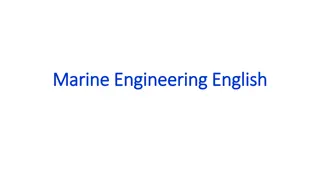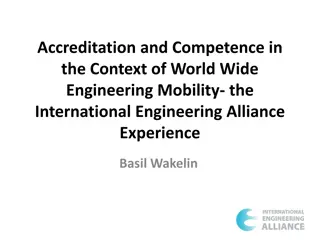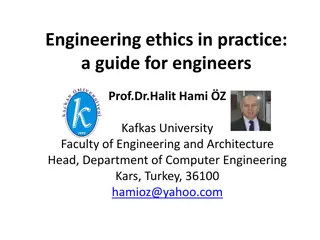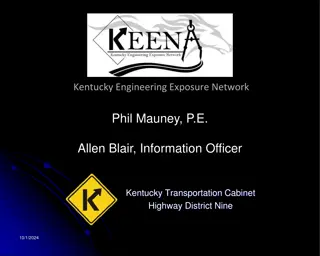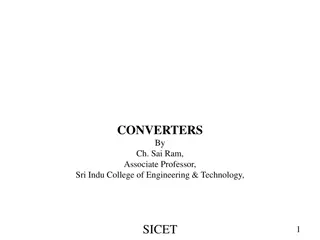Converting Document-Based Systems Engineering to Model-Based Approach
This presentation outlines a real-life example of converting from document-based to model-based systems engineering, focusing on an MBSE effort conducted on a DoD program. The objectives include transitioning to Agile development, supporting impact analyses, system improvements, sustainment activities, and more. The conversion process involved re-creating system architecture, converting diagrams, importing requirements, and training the team. MBSE is highlighted as key to supporting Agile Development and enhancing system capabilities.
Download Presentation

Please find below an Image/Link to download the presentation.
The content on the website is provided AS IS for your information and personal use only. It may not be sold, licensed, or shared on other websites without obtaining consent from the author.If you encounter any issues during the download, it is possible that the publisher has removed the file from their server.
You are allowed to download the files provided on this website for personal or commercial use, subject to the condition that they are used lawfully. All files are the property of their respective owners.
The content on the website is provided AS IS for your information and personal use only. It may not be sold, licensed, or shared on other websites without obtaining consent from the author.
E N D
Presentation Transcript
Converting from Document Based to Model Based Systems Engineering A Real-Life Example David Butler, Ryan Roy, Sean Conway Presentation to Huntsville INCOSE MBSE WG November 12, 2020 1
Background Program history This MBSE effort was conducted on a DoD program that was approaching Milestone C Previous modeling was accomplished with System Architect (SA) Rational System Architect (RSA) No logical architecture was developed Modeling focused on data exchange What we started with DOORS Requirements Database Use cases SA use cases and sequence diagrams at the MEI Level RSA sequence diagrams at the CSCI/SW Level Program Entering MS C 2
MBSE Objectives Objectives of the MBSE Effort Gradually transform from document based to model based Support transition to Agile development Support impact analyses to support system improvements and upgrades as well as Foreign Military Sales (FMS) Support system sustainment activities MBSE is Key to Supporting Agile Development 3
MBSE Conversion Process Re-created the system architecture in Cameo while maintaining legacy traces and information the best of our ability Created a logical architecture Converted sequence diagrams to functions/activities Custom script used Resulted in many duplicate functions and duplicate swim lane actors Imported requirements and traces from DOORS Began building activity diagrams from functions/activities derived from sequence diagrams Began developing physical architecture, software and hardware libraries from existing artifacts and previous modeling efforts by the Government office Allocated SW to HW to develop a configuration managed deployment model Demonstrated model capabilities to team leads to gain their interest and support Began training SE team and extending that training to specialty engineers Training is the key to conversion 4
MBSE in Support of the Agile Process As part of the DoD Agile Technical Insertion initiative, the program was designated among a number of high priority programs to adopt an agile development methodology to enable maturation of the system. The prime contractor and the Army are partnering to prototype an Agile development process in order to build, test and field capabilities faster to respond to current and emerging needs. Regular feedback among the team members and the customer is a core tenet of Agile methodology, which involves the delivery of products or capabilities in regular Program Increments (PIs). For this program, they are three-month PIs, comprised of three-week sprints . Utilizing the Scaled Agile Framework (SAFe 5.0). MBSE supports the Agile development process 5
Scaled Agile Framework System of Systems Processes and Products Program Processes and Products 6
Process to be executed for each Program Increment Define Goals Prior to PI Planning Event IMPLEMENTATION Identify Model Backlog Items ANALYSIS Specify Black Box Behavioral Flow for Each Goal Complete Traces System/PIDS level activity diagrams Complete Model Artifacts Identify Interactions and Perform Impact Analysis Ensure system context supports activities/flows Identify/Specify Component Interfaces BDDs and IBDs for each flow Specify White Box Behavioral Flow and Allocate Behavior SRS level activity diagrams DESIGN 8
Scaled Agile Framework Process Execution (1 of 2) Define Goals Identify areas to be developed or modified Review/develop system level or enterprise level flows/threads Identify supporting diagrams to be developed Capture the feature in a model element Analysis Develop/modify System and/or PIDS level activity diagrams Identify interface requirements/changes Perform analysis to find impacts to system and requirements Capture the story as a model element with traceability to the feature 9
Scaled Agile Framework Process Execution (1 of 2) Design Develop white box (SRS level) activity diagrams Specify interfaces with BDDs and IBDs (OOSEM process). Defines interaction between logical components to realize each system action or operation Actions from activity diagrams are captured as allocated activities or operations; logical interfaces can be captured as component ports; persistent stores captured as store properties; performance properties captured as value properties of the block, or properties of the activity allocated to the block Define logical component state machine Model test cases with sequence and activity diagrams Capture verification objectives with traceability to story and existing requirements if applicable Implementation Complete model artifacts to support the increment Capture verification results Identify model backlog items Branch models 10
Modeling Pattern Define Logical Decomposition Functional hierarchy and requirements allocation Activity/sequence diagrams to specify mission threads Establish flows between part property and port System context for the current thread Define flows between logical performers Specify interaction between logical performers 11
Challenges Culture change It is difficult to break old habits Getting past the This is the way we have always done it Culture change takes time Lack of existing SE practices and processes Training personnel Training should start with top-level management to get their buy-in to the process Training should go beyond tool usage and language mastery and include how to use the tool to perform systems engineering Program currently at Milestone C With the program transitioning into production and fielding, the focus is shifted away from architecture and design Inability to break model into components due to read-only limitations Cannot properly establish relationships with read-only projects leading to development of one comprehensive model Breaks the SysML modeling paradigm limits usefulness of the language May cause problems due to project size Lack of SE knowledge and processes makes transition more difficult 12
Path Ahead Continue building out the model Develop system logical architecture Initial focus is on behavior model Continue development of activity diagrams and complete the functional architecture Modeling of the states and modes Gain help from hardware and network teams in populating the model Focus on deliverables that can be generated by the model The drives which elements are populated first Leverage Northrop-Grumman MBSE libraries and templates where applicable Nurture MBSE culture Continue to drive the culture change through continuous training and demonstration of usefulness Demonstrate how the model can be used in daily activities and to produce program deliverables Use the model to support impact analyses to support system upgrades and for maintaining fielded configurations Use model to support Foreign Military Sales configurations The model enables development of various configurations Use the model to identify exportable/non-exportable components 13
Conclusion and Takeaways MBSE being implemented into existing DoD program MBSE being used to support Agile development process MBSE requires adequate training and culture change Training should begin with leadership who can then drive the effort and assist in culture change as opposed to hindering it Sound systems engineering knowledge, practices, and processes are required to implement MBSE 14
